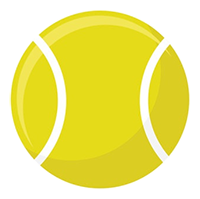1. INTRODUCTION– THE GOLDEN POINT
Padel is a relatively “new” sport, especially when compared to other sports. This means that padel is still in a stage of growth and evolution, so it is not very strange that between seasons they can make modifications or changes in the rules.One of the rules that most affected the game of padel in its day was, without a doubt, the incorporation of the golden point in the game.
The golden point was a decision that they introduced for the first time at the Cervezas Victoria Marbella Master in March 2020.
The reason for introducing this measure was clear to everyone, to shorten the length of the padel matches, presumably due to “pressure” from the television media, although the words of the then Director General of the World Padel Tour, Mario Hernando, were as follows: “The World Padel Tour is a competition in constant regulatory evolution. If in previous seasons we decided to change the official court or the type of grass, this year we are introducing the Golden Point with the same objective: to make the game more dynamic and more attractive for the fans who watch it live and for those who follow it on television or via streaming”.
So in this article we are going to talk about what most experts consider to be the most important point in a match, the golden point.
2. RULES
– The golden point will be played whenever 40/40 (deuce) is reached.
Previously, when the score reached 40-all, one of the two pairs was required to win two consecutive points to win the game. This fight to win two points in a row could go on ad infinitum, there was no limit to the number of attempts or time.
– The recieving pair would choose which side to make the opponent serve on.
When you reach 40/40, it is up to the recieving partnership to decide whether they want to receive the serve on the right side or on the left side of the court. This is because, “in theory”, the serving partner is the one who starts with the initiative of the point.
– The returning partner will not be able to change position.
Whichever side they have chosen to recieve the serve on, the remaining players must maintain their positions, i.e. the player on the forehand side must continue to play on that side of the court and the same for the backhand side.
– The golden point is definitive.
It is the point that will determine which pair wins the game.
3. HOW TO PLAY THE GOLDEN POINT
Although all of us who play padel would like there to be some infallible universal guidelines on how to play a golden point and always win it, the reality is, as you can imagine, that this is not the case.
So, although the best way to play a golden point will depend on many variable factors (who my opponents are, how I am playing, at what point in the match we are at, if we are downwind, etc.), we will try to give some tips or guidelines that we believe can help to play the golden point better.
First step: Is it our turn to serve or return?
If it is our turn to recieve, the first thing we have to do is to decide who is going to .
To do this, we should ask ourselves questions such as: who is the best receiver of the couple, on which side does the opponent serve better , who is the one missing less returns in the match, who is going through the best moment of the game, who feels more confident?
Regarding how to play the golden point from returning position, 3 tips that could go very well are:
– Return to the player who has served (they are on the move and maybe you can catch them off balance).
Especially if they are serving in Australian style. Being clear about where we want to return to, it will help us a lot to not miss the return and to execute it with more confidence and guarantees.
– Don’t hit a return lob.
Unless we feel very confident that we are going to make a good lob (and for many players, this is not a time we feel confident), it is better to return a lower ball. A bad lob would mean, in the best of cases, giving the advantage of the initiative to the rivals.
– Return with margin for error.
This is not the time to look for the perfect little shot, or the impossible angle, or the passing shot of the year… it is the time to return well, but with a certain margin. Don’t forget that the servers are also gambling on losing the game, so they are hardly going to be looking for a first volley winner or a very attacking volley.
* Statistical fact: there are more chances of winning the point as returners when the servers are in Australian style (55% compared to 45%).
If it is our turn to serve on the golden point, we cannot decide which side we are going to serve on or who is going to serve. However, this does not mean that we cannot do anything when it is our turn to serve on a golden point.
For example, many professional partners have a few trained moves that they only play on the golden point. This could be a good option, as these are moves that have been repeated many times and that result in a high percentage of points won.
Other general tips that you could apply when it is your turn to serve would be:
– Serve to the glass if we serve normal.
– Serve to the T if we serve in Australian.
- Get the first serve in, to keep the pressure off of not double faulting at a crucial moment.
In a moment like this, it is preferable to risk a little less the first serve and put it inside to pass all the pressure to the receiver than to look for a great serve.
Enjoy this amazing Golden point: https://www.youtube.com/shorts/NsrQgoHF5EQ
4. STATISTICAL DATA ON THE GOLDEN POINT
To give us an idea of the weight that golden points have in a match, statistical studies have confirmed that one out of every three games in women’s padel and one out of every four games in men’s padel are decided on the golden point (Muñoz et al., 2022). This means, in the case of men, that in a set that has ended 7/5, there will have been 3 golden points (according to the statistical average).
Another study found that, on average, couples who win the match win more golden points than those who lose, which indicates, without a doubt, that this point is very relevant when it comes to winning a set and a match, whether I am on serve or the return.
Some experts believe that golden points favour the “weaker” partner in the match.
Whether we agree or not, once again, the statistics indicate that since they introduced the golden point , there have been a greater number of breaks and more evenly matched sets in matches. So, even if only slightly, the golden point has managed to increase equality, favouring theoretically inferior couples to be able to surprise and/or make matches more difficult for other couples of great qualities.
Another very interesting study analysed whether there were differences between the actions of finishing points depending on the importance of that point within a game. In other words, they wanted to see if players played the same when they were, for example, 15/15 in a 2/2 as when they played a golden point in a 4/5.
This study found that the percentage of winning strokes in men’s padel decreases as the importance of points increases during a game. At the same time, they also observed that the percentage of errors is increasing, reaching up to 61.5% of errors when playing a golden point (Escudero et al., 2022).
Another study showed that when players play the golden point, they hit more lobs and the points are longer than any other point in the game.
5. CONCLUSION
Whether we like it or not, the golden does seem to be here to stay, as, for the moment, there is no hint that it is going to disappear. We can’t deny it adds excitement for the fans at pro level.
Moreover, we are sure we are not wrong if we say that people either love it or hate it. There is no middle ground. It’s all down to one card. It’s either heads or tails. You either win it or you lose it. There are no second chances.
So, whether we are on the side that loves it or hates it, we have no choice but to deal with it, so we have to try to train ourselves to deal with it in the best possible way.
A good piece of advice, probably in all areas of life, is to always look at what the professionals are doing. And in the case of the golden point in padel, it has been seen and confirmed that players radically change the way they play when they play this decisive point. They become much more conservative as winning or losing the game depends on this point. So, this would be, perhaps, the best guide to how we should play our golden points, calmly and more conservatively.
Do you agree or are you of the opinion that we should play the same and be brave?
TO LEARN MORE ABOUT THE GAME OF PADEL:


 Upgrade now
Upgrade now




